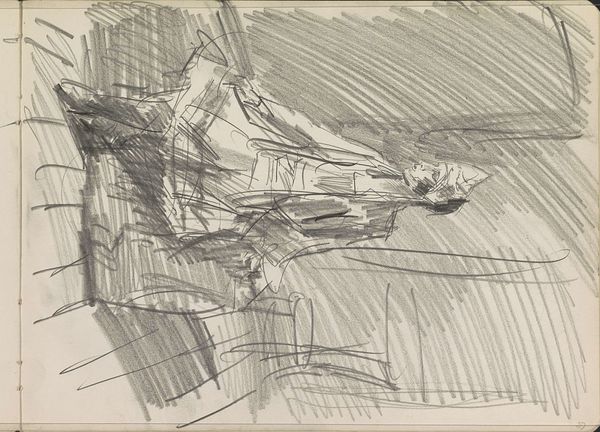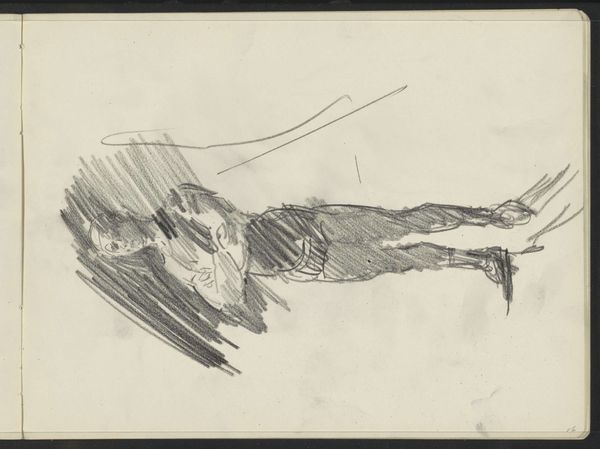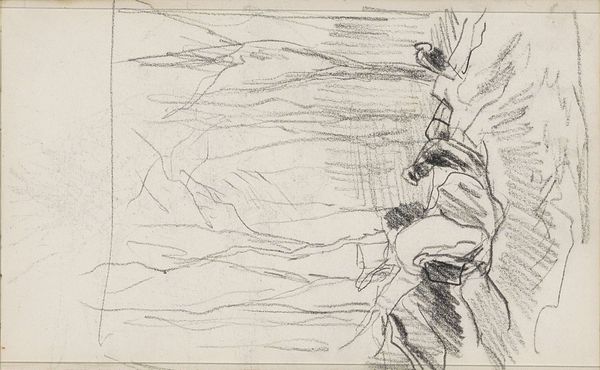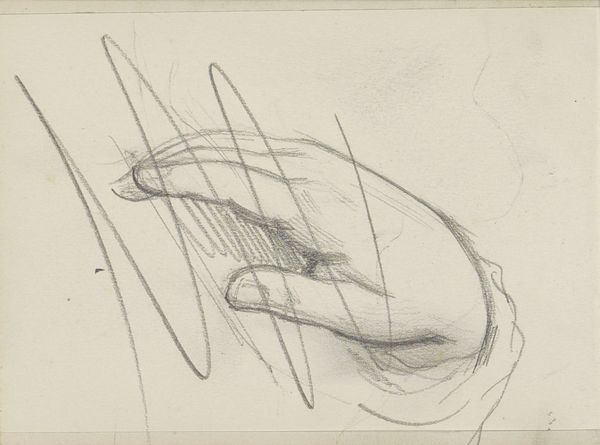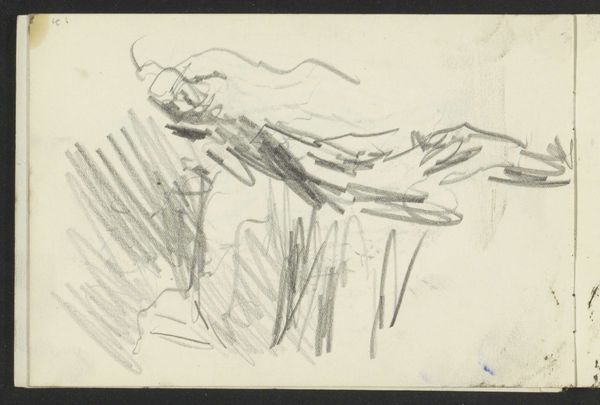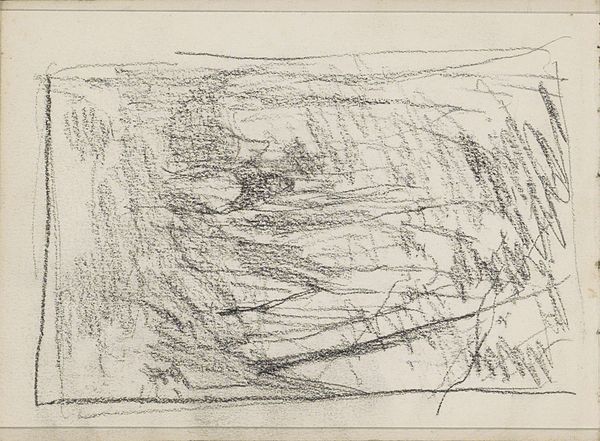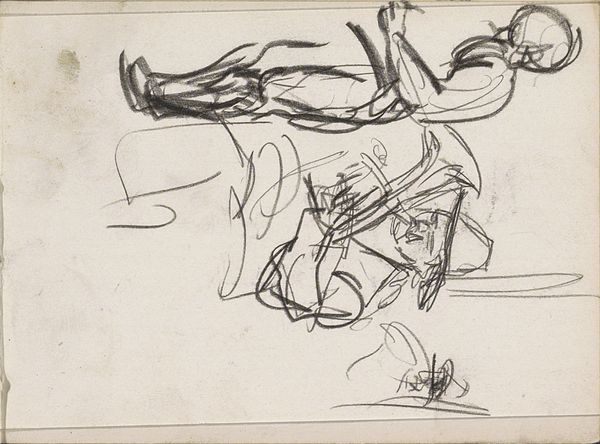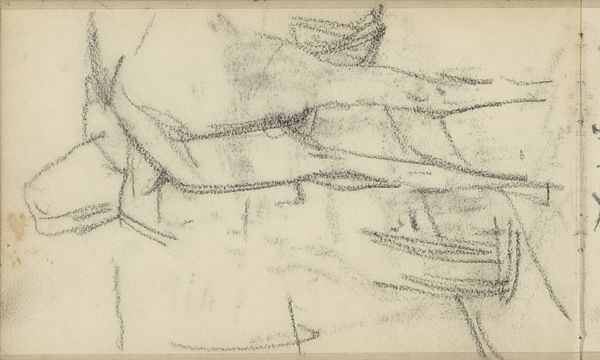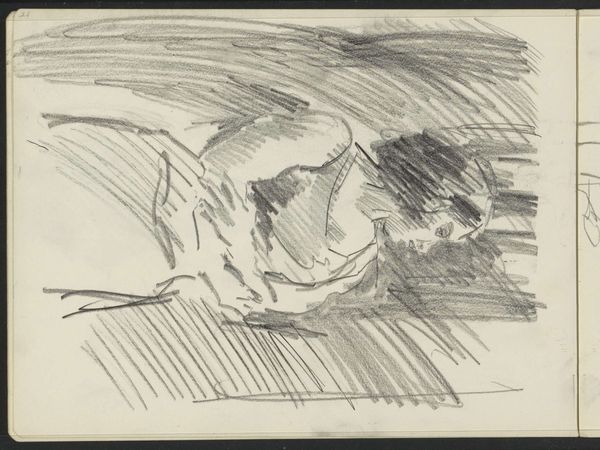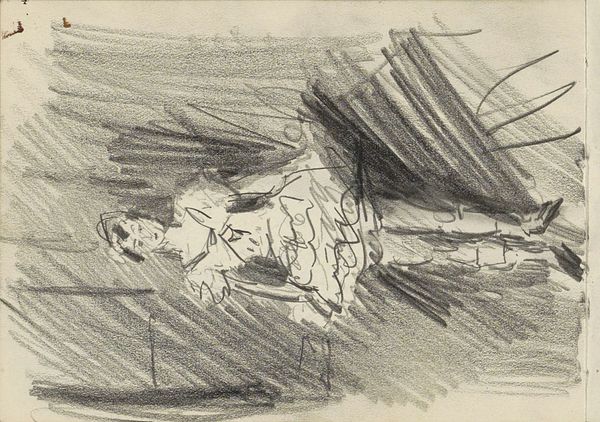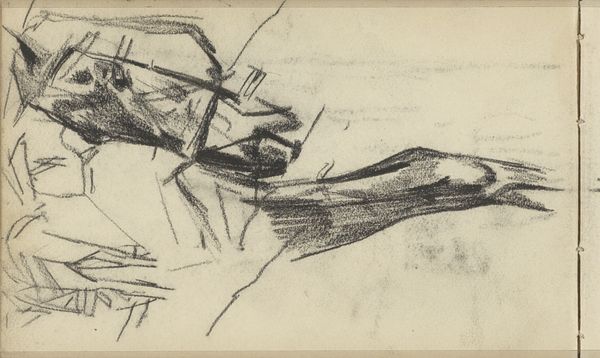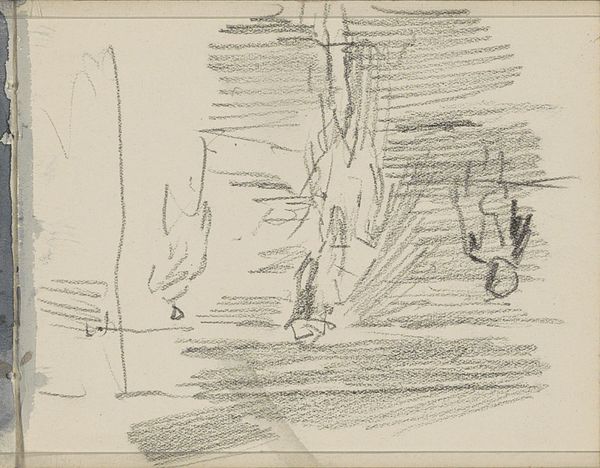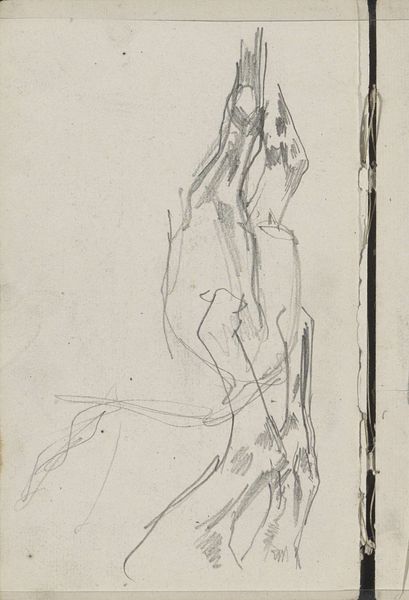
drawing, pencil
#
portrait
#
drawing
#
pencil sketch
#
figuration
#
pencil
#
line
Copyright: Rijks Museum: Open Domain
Curator: Here we have “Voeten onder een rok en een mouw” which translates to "Feet under a skirt and a sleeve." It is a pencil drawing created by Bramine Hubrecht, sometime between 1865 and 1913. It resides here at the Rijksmuseum. Editor: My first thought? A bit anxious. Look at the nervous energy in those lines. It feels like a sketch dashed off in a hurry, like trying to capture a fleeting thought before it disappears. A bit raw, like a peek behind the curtain of formal portraiture. Curator: Precisely! What interests me is that this “hurried” sketch utilizes the mass production capabilities afforded through pencil manufacturing during the 19th century. Here, the line is the thing – capturing form economically through layered strokes of graphite on relatively inexpensive paper. Editor: It’s more than just line though. Notice the contrast! Those scribbled shadows next to the delicate, suggestive outlines. Hubrecht almost seems to be exploring different levels of finish within the same work, pushing against the traditional idea of a polished, resolved drawing. I like the rebellion! Curator: Agreed. Think about the labor involved – a single artist, probably working alone in their studio, or perhaps in the domestic space of their home. The use of a ubiquitous material like the pencil allowed her, and countless other artists of the time, to democratize their artistic practices. It moved away from relying on wealthy patrons demanding high cost media. Editor: Yes! I get the feeling she’s reveling in that freedom. The angle is so unexpected – we’re looking down at a cropped view, catching a secret glimpse of hidden garments and feet. It is almost intimate and so playful! Curator: And playful perhaps within the constraints of the domestic sphere. Pencil as tool and the mass production of paper democratized artistic practices; but Hubrecht’s drawing hints at the limited spheres of possibility for many women artists within the art world's historic power structures. Editor: Absolutely. Thinking about it now, the confined viewpoint might speak volumes too. This makes me think about other unfinished art historical gems. Sometimes it’s the raw, unfiltered pieces like this, that can hit you hardest. Curator: Indeed. “Voeten onder een rok en een mouw” serves not only as a reminder that production determines reception but also demonstrates how artists make choices according to, and also against, the means available to them. Editor: What a wonderful piece for thinking. I appreciate you grounding that free spirited impression I was left with earlier. I may never look at a simple pencil the same way again.
Comments
No comments
Be the first to comment and join the conversation on the ultimate creative platform.

